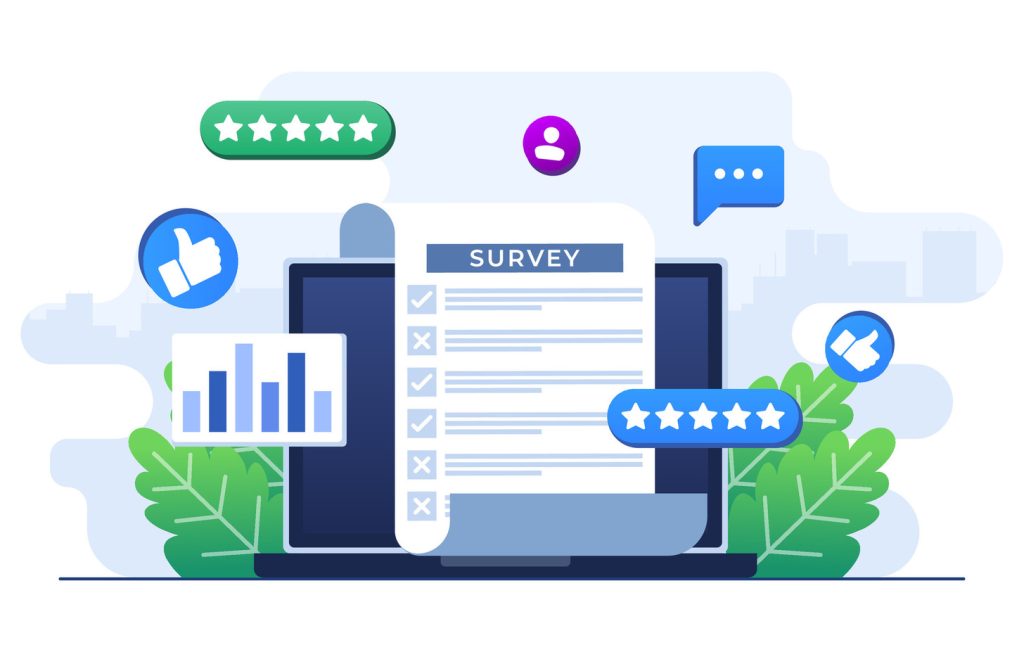How to Interpret Feedback And Survey Results Effectively

Modern organizations increasingly rely on measurable insights rather than assumptions to solve complex challenges. Whether addressing workplace culture or customer experience, data-driven strategies outperform guesswork every time. This complete guide reveals how to transform raw information into meaningful action.
Surveys offer a structured way to collect perspectives from employees, customers, or stakeholders. When analyzed correctly, this input becomes a roadmap for improvement. Leaders gain clarity on pain points like job satisfaction gaps or service quality issues.
Effective interpretation requires balancing technical analysis with human understanding. Patterns in responses highlight systemic problems, while open-ended answers often reveal unexpected opportunities. For example, a single comment might expose a leadership blind spot affecting team morale.
Prioritizing actionable insights fosters trust. Participants feel valued when their input leads to visible changes. This cycle boosts engagement and strengthens relationships across departments or customer bases.
Successful businesses don’t just collect data—they connect it to outcomes. Aligning findings with organizational goals turns abstract numbers into targeted initiatives. The result? Measurable progress in retention, efficiency, and revenue growth.
Key Takeaways
- Data-driven decisions outperform intuition in solving workplace and customer challenges
- Structured surveys provide measurable insights into critical operational areas
- Balancing quantitative analysis with qualitative feedback uncovers hidden opportunities
- Transparent action based on findings builds trust and engagement
- Strategic alignment of data with goals drives tangible business improvements
Understanding the Value of Survey Feedback in Business
Leading organizations now prioritize structured data collection to drive operational decisions. Insights from workforce assessments and client interactions shape strategic improvements. This approach transforms raw information into measurable growth opportunities.
Measuring Employee Engagement and Satisfaction
Employee engagement surveys establish performance benchmarks across departments. These tools pinpoint areas needing HR attention, from management effectiveness to policy adjustments. Regular assessments align workplace practices with staff expectations.
Productivity and retention rates often reflect workplace culture quality. Structured data collection reveals gaps in resources or communication. Addressing these issues fosters environments where teams thrive.
Recognizing Customer Experience Improvements
Customer satisfaction surveys identify service gaps affecting loyalty. Metrics like Net Promoter Score quantify recommendation likelihood, highlighting market position strengths. Tracking these indicators demonstrates ROI on experience investments.
Service teams gain clarity on pain points through systematic data analysis. Prioritizing resolution of common complaints directly impacts retention. Businesses that act on this intelligence build lasting client relationships.
Designing Effective Surveys for Actionable Insights

Well-designed surveys transform raw data into strategic assets. The difference between useful insights and misleading information lies in question structure and tool selection. Organizations that master these elements gain clearer paths to operational improvements.
Crafting Relevant and Unbiased Questions
Neutral phrasing prevents skewed results. Avoid questions like “How excellent was our service?” which imply expected answers. Instead, use balanced scales: “Rate your experience from 1 (poor) to 5 (outstanding).”
Mix question types strategically. Multiple-choice formats simplify analysis, while open-ended fields capture unexpected perspectives. Limit surveys to 10 items—respondents abandon lengthy forms.
Selecting the Right Survey Tools
Advanced platforms offer branching logic to customize follow-up questions. Features like progress bars and mobile optimization boost completion rates. Prioritize tools with real-time dashboards for instant trend spotting.
Training teams to interpret results ensures consistent analysis. Establish guidelines for distinguishing outliers from systemic issues. Proper toolkits turn scattered opinions into prioritized action plans.
Implementing Manager, Employee, and Staff Surveys
Progressive organizations use layered survey approaches to capture nuanced workplace insights. Tailored questionnaires for different roles create targeted data streams that reveal systemic strengths and vulnerabilities.
Managerial Surveys to Gain Leadership Insights
Leadership assessment tools track decision-making patterns across management tiers. Quarterly pulse checks via email or virtual sessions help identify coaching needs. A hospitality company discovered seasonal stress peaks affecting supervisor effectiveness through such analysis.
These evaluations measure alignment between executive priorities and frontline realities. Metrics often focus on resource allocation clarity and cross-department collaboration. Regular reviews expose gaps in communication channels or training adequacy.
“Anonymous manager surveys reveal unfiltered perspectives on operational bottlenecks that formal reports often miss.”
Employee Surveys: Encouraging Honest and Detailed Feedback
Secure platforms with identity protection yield 40% more participation in sensitive topics. Questions about work-life balance and peer relationships surface cultural friction points. Tech firms frequently use this method to assess remote team dynamics.
| Survey Type | Frequency | Key Metrics | Implementation Tip | |
|---|---|---|---|---|
| Manager | Quarterly | Decision speed | Conflict resolution | Use video conferencing for nuanced discussions |
| Employee | Biannual | Autonomy levels | Growth opportunities | Ensure mobile-friendly formatting |
| Staff | Project-based | Tool effectiveness | Workflow barriers | Target departments separately |
Department-specific questionnaires address unique challenges in engineering versus sales teams. This precision helps allocate resources where they create maximum impact. Analysis of recurring comments often sparks innovation in process redesign.
Leveraging Customer Feedback to Enhance Loyalty

Customer insights now drive competitive differentiation in service-driven markets. Systematic analysis of client perspectives uncovers actionable paths to strengthen retention and advocacy. Organizations that master this process turn casual buyers into vocal brand champions.
Customer Satisfaction and Net Promoter Score Analysis
Customer satisfaction surveys reveal precise pain points in service delivery. A retail chain improved resolution times by 68% after tracking recurring complaints about checkout delays. These tools measure emotional responses through scaled ratings and open-text fields.
| NPS Category | Score Range | Key Characteristics | Strategic Action |
|---|---|---|---|
| Promoters | 9-10 | Enthusiastic advocates | Leverage testimonials |
| Passives | 7-8 | Satisfied but indifferent | Boost engagement |
| Detractors | 0-6 | Churn risks | Rapid issue resolution |
Net Promoter Score segmentation enables tailored loyalty strategies. Passives often convert to promoters through personalized follow-ups, while detractors require immediate service recovery efforts.
Responsive Strategies for Service Improvement
Real-time feedback systems empower frontline teams to address concerns before clients disengage. A SaaS company reduced churn by 22% after implementing live chat support during satisfaction surveys.
“Analyzing service gaps through client conversations transforms reactive support into proactive relationship-building.”
Prioritize high-impact changes first. Fixing broken order tracking systems typically delivers faster loyalty gains than cosmetic website updates. Regular progress reports to clients demonstrate commitment to their experience.
Interpreting Feedback And Survey Results for Strategic Decision Making
Importantly, timely analysis transforms raw information into organizational momentum. When done promptly, teams review findings while questions remain relevant, maintaining context for accurate interpretation. As a result, this approach bridges gaps between data collection and meaningful change.
Analyzing Data Trends and Reporting Metrics
Immediate sharing of employee engagement findings preserves urgency. A tech startup improved retention by 31% after discussing metrics within 48 hours of collection. Transparency builds credibility—teams see direct links between their input and leadership actions. To start, focus on extremes first. By emphasizing success, highlighting top-rated areas identifies strengths to replicate. On the other hand, low-scoring categories reveal priority fixes. As a case in point, one healthcare provider restructured training programs after discovering consistent workflow bottlenecks in quarterly reviews.
| Response Type | Strategic Value | Common Themes | |
|---|---|---|---|
| High Satisfaction | Reinforce best practices | Recognition programs | Career development |
| Low Satisfaction | Target improvement areas | Communication gaps | Resource shortages |
Turning Insights into Actionable Business Strategies
In practice, open dialogue unlocks deeper understanding. Specifically, asking “What factors influenced your rating?” exposes root causes behind numbers. For example, a logistics company redesigned shift schedules after drivers explained fatigue patterns during follow-up sessions.
Effective execution requires distributed ownership. Assign improvement tasks across departments rather than centralizing responsibility. Clear timelines and success metrics keep teams aligned:
- Define measurable objectives for each initiative
- Establish cross-functional collaboration channels
- Schedule progress checkpoints every 30 days
“Teams that co-create solutions based on shared data achieve 73% faster implementation than those relying on top-down mandates.”
Prioritize quick wins to maintain momentum while tackling systemic challenges. This balanced approach sustains engagement throughout transformation cycles.
Conclusion
Notably, organizations that excel in data utilization recognize survey feedback as a strategic asset. When leveraged correctly, this resource shapes company policies, training programs, and workplace culture enhancements. By doing so, the right analytical approach converts diverse opinions into coherent roadmaps for growth.
Mastering systematic interpretation creates measurable competitive advantages. Businesses gain clearer views of employee needs and client expectations through structured data evaluation. This intelligence drives smarter resource allocation and service improvements that boost loyalty. As a result, continuous improvement cycles emerge from well-designed feedback systems. In turn, regular pulse checks keep teams aligned with shifting market demands while maintaining operational agility. Consequently, companies that prioritize this practice see sustained progress in retention metrics and customer experience scores.
To begin with, balancing numerical trends with narrative comments ensures comprehensive insights. Moreover, quantitative patterns highlight systemic issues. In addition, qualitative details expose hidden opportunities. Ultimately, together they form actionable strategies that transform organizational performance across all levels.

